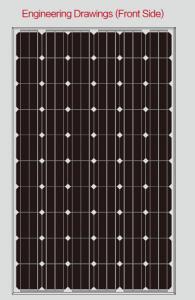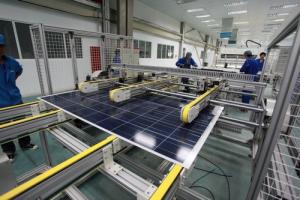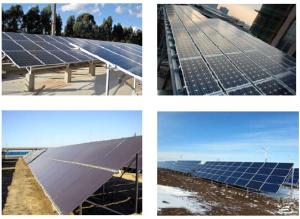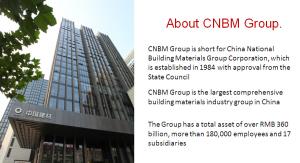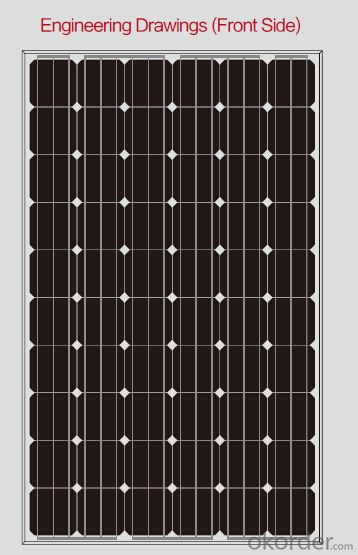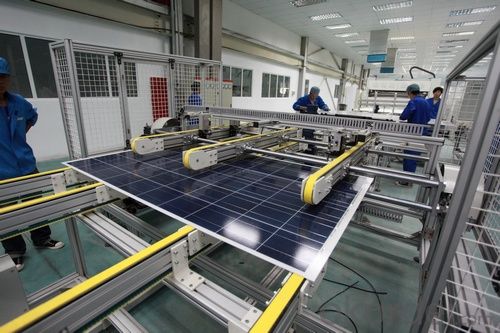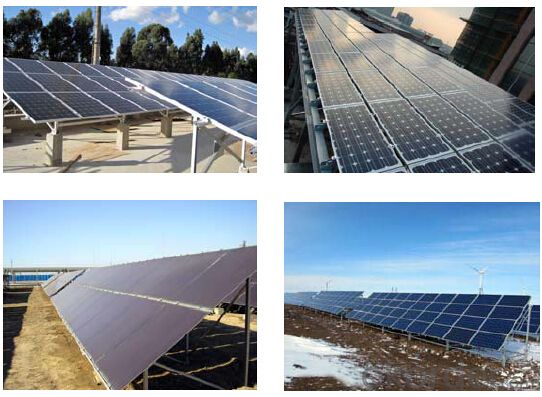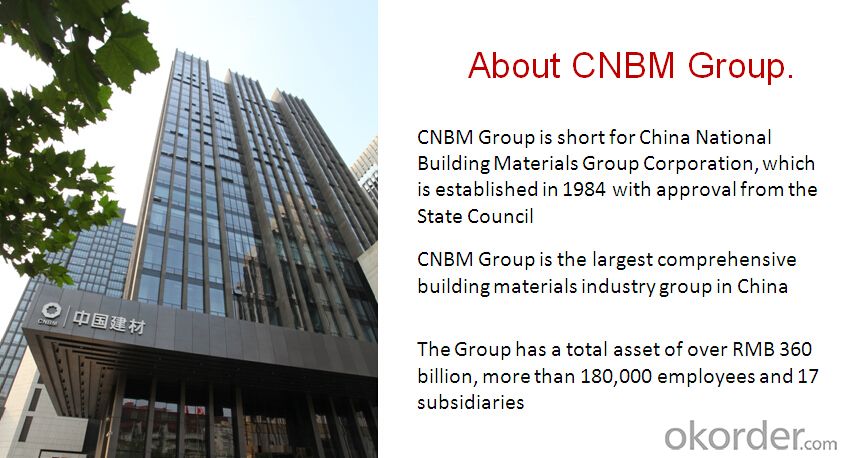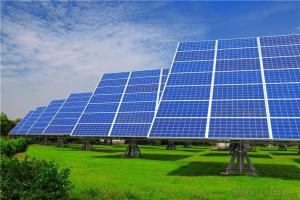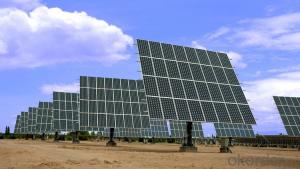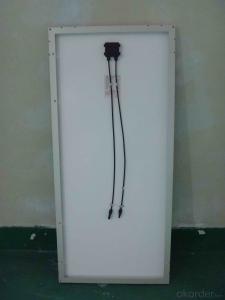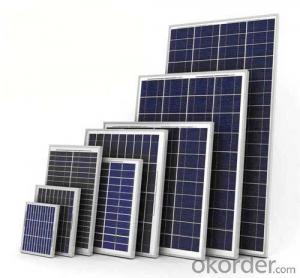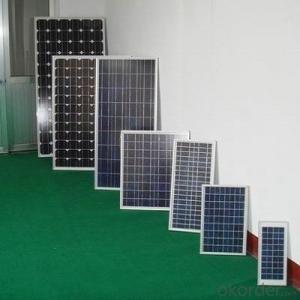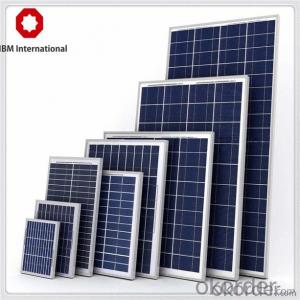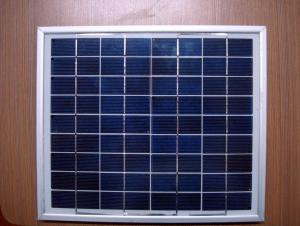Low Light 250W Poly Solar Panels Made in China at Low Prices
- Loading Port:
- Shanghai
- Payment Terms:
- TT or LC
- Min Order Qty:
- 1 PCS
- Supply Capability:
- 100000 PCS/month
OKorder Service Pledge
OKorder Financial Service
You Might Also Like
Advantage:
1.Widely using of the most popular and mature type of modulesfor on-grid system.
2.Specifications subject to technology and test conditions,GSUN Solar reserves the right of final interpretation.
3.Leading manufacturing technology in PV industry, strictly controlling the quality of raw materials and the process of producing.
4.100% EL inspection, ensures modules are defects free.
5.Cells binned by current to improve module performance.
6.Anti reflective glass. Not only to increase the light absorption, but also to make the module has the function of self-cleaning in water environment, effectively reducing the power loss caused by dust.
7.Outstanding performance in low-light irradiance environments.
8.Excellent mechanical load resistance: Certified to withstand high wind loads(2400pa) and snow loads(5400pa).
9.High salt and ammonia resistance.
10.Positive power tolerance:0-+5w.
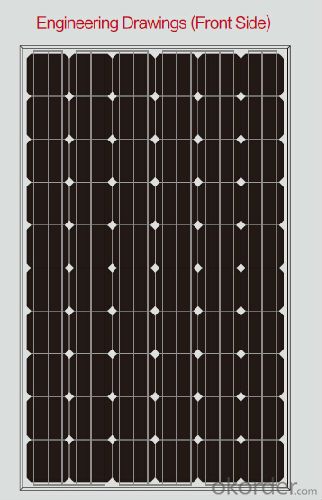

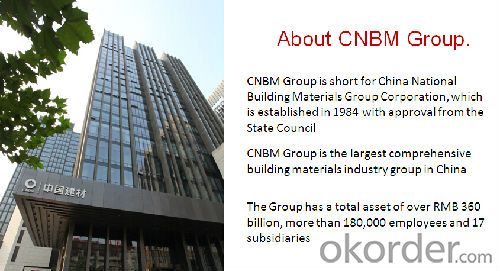
Specification:
Temperature Coefficient
NOCT | 45℃±2℃ |
Temperature Coefficients of Isc (%/℃) | 0.0492 |
Temperature Coefficients of Voc (%/℃) | –0.3374 |
Temperature Coefficients of Pmp (%/℃) | –0.4677 |
Performance Parameters
Max Power Voltage Vmp(V) | 30.3 | 30.8 | 31.1 | 31.4 | 31.9 |
Max Power Current Imp(A) | 7.60 | 7.64 | 7.73 | 7.81 | 7.85 |
Open Circuit Voltage Voc(V) | 36.1 | 36.6 | 37 | 37.3 | 37.7 |
Short Circuit Current Isc(A) | 8.50 | 8.55 | 8.65 | 8.75 | 8.85 |
Mechanical Data
Dimension | 1655 x 992 x 40 mm |
Weight | 22.5kg |
No. of Cells and Connections | 60 (6 x 10) |
Tolerance | 0~+5W |
Cell | Monocrystalline Cell 156 x 156 mm |
Packing | 624 Pcs/40ft(H) Container |
Warranty
5 years product warranty
10-years 90% of Min. rated output power,and 25-years 80% of Min. rated output power warranty
Comprehensive Certificates:
CE Certificate
ISO 9001:2008:Quality management systems
IEC61215、IEC61730
TUV and UL
IDCOL for Bangladesh
Feature:
- High efficiency, multicrystalline silicon solar cells with high transmission
and textured glass deliver a module effi ciency of up to 16.0%,
minimizing installation costs and maximizing the kWh output of your
system per unit area.
- Tight positive power tolerance of 0W to +5W ensures you receive
modules at or above nameplate power and contributes to minimizing
module mismatch losses leading to improved system yield.
- Top ranking in the “TÜV Rheinland Energy Yield Test”
FAQ:WHAT'S THE ADVANTAGES OF CNBM?
1.CNBM is a state-owned company under jurisdiction of central goverment , one of Fortune 500 .Just because of this ,we can get more support and resources from our government.So ,it is realiable .
2.CNBM's solar products are high-qualified with TUV,UL,VDE,CE,ISO certificates. Our products ranges top in China.
3.Just as I mentioned in attahment ,we signed 500MW project with Urkan under the witness of our chairman Xi Jinping ,CNBM has ability to meet your large quantity needs,Our annual capacity is 1GW.
4.We can offer you a competitive price .Because you are our potential and valued customer .
5.We ,CNBM ,has our own factory :CNBM JETION SOLAR .We can also customize according to customers' need . You can google our factory .
FAQ:Why install a Solar PV system?
There are many reasons to install a Solar PV system now:
As a low risk investment the returns of between 8-10% net are hard to beat especially during this financial downturn where bank interest rates are below inflation (i.e. money in a savings account even with interest added is actually reducing in value).
Its good for the environment. Installing a small domestic system of around 1.5 kW would provide around 1125 kWh of electricity every year, this would save around half a tonne of CO2 annually.
Electricity can be supplied at the point of use. Reducing strain on our national grid network.
The system will run silently and so will cause minimal disruption.
There is very little maintenance required for a PV system.
After the initial installation costs, there are no further fuel costs.
PV systems are modular, and can be added to at any time.
FAQ:How long will a Solar PV system last?
The MCS accreditation scheme means that all panels installed under the scheme by approved agents will continue to generate for at least 25 years. Over this time their output will diminish slightly but they should still perform at 85% at the 25 year mark according to the scheme rules. Manufacturers have invested heavily to ensure their products meet and in most cases exceed these target
- Q: I'm from Toledo, OH about 2 miles from the MI line. We are a foster family and have adopted 5 children. We just moved into a 5400+sq 2 story home. We have (3) 2.5-3 ton AC units to cool this huge house. We got the house cheap...$75k couldn't pass it up! Anyway...I was wondering how many solar panels it would take and of what wattage to power these Central Air Units and maybe the rest of the house. We have 3 people in our home......9 of which are children who leave the lights on and run hot water to beat the band. We have all brand new energy star appliances and front loader washer and dryer. Gas Range and Gas hot water tank. Was thinking of using metal window frames and buying solar cells and making my own panels. Just don't know how much to buy. We face south with no trees. Constant Sun. thanks for your help. An e-mail address to bounce questions off of would be helpful if you experienced. tx.
- Basically, the answer to your question is forget it. Your approx 8 tons of AC will require about 28 KW of electricity just to run them. Add the rest of the house requirements and your talking a load of 50KW or more. Even if your state has a subsidy program, (and most of them are out of money now), it's a $200,000. system. Making your own panels would be a mistake. Reliability and survival are the key measures for a panel system and homemade panels are just not going to be reliable enough to survive the cold winters. In the end, it is always cheaper to buy good, conservatively rated commercial panels, especially in view of the fact that prices have been tumbling lately. Often, the mounting, interface and conversion costs are greater than the cost of the panels themselves. You might save some bucks by fabricating a mounting framework yourself and installing it, but such a system would not qualify for most state programs and.... you had better be an expert architect or engineer to put together something that will work well. The basic problem after all of this is that your maximum demand will be at night and the panels put out nothing at night. Better to forget about a 00% solution. You can install a modest 0 - 20KW system for perhaps $50,000 costs after rebates and subsidies and perhaps ... it might cover about /4 of your energy needs and might just, pay the investment back in 0 to 5 years. Get first rate equipment and professional installation, if you want the system to perform reliably. Solar voltaics make a lot of sense for Arizona and perhaps Florida. For anyone north of the Mason Dixon line however, fossil fuels are cheap, reliable and work far better.
- Q: we are planing to move out of the grid. we need to operate constantly 2 laptops online - does any one can tell us how much solar panels we shall need to make sure of that?
- Create okorder
- Q: How do solar panels affect the aesthetics of a building?
- Solar panels can have both positive and negative effects on the aesthetics of a building. On one hand, solar panels can enhance the visual appeal of a structure, adding a modern and sustainable element to its design. They can be integrated seamlessly into the architecture, creating a sleek and futuristic look. On the other hand, some people may find solar panels visually unappealing, especially if they are not well-integrated or if they cover a significant portion of the building's surface. Ultimately, the overall impact on aesthetics depends on the design, placement, and integration of the solar panels.
- Q: what direction should solar panels face to get the best exposure of the sun.
- The following links is a sun angle calculator which I find very helpful during my days of doing project about solar panel. The calculator will give you the accurate location of the sun. Solar panel work best when it is directly facing the sun. All you have to do is key in your location details and it will provide you with two most important details: azimuth angle and altitude angle. Azimuth angle is the East angle where the Sun is relative to the South while altitude angle is the tilt angle of the solar panel throughout the day. By using these two angles, you will maximize your exposure of solar panels. However, if you are experiencing rainy or cloudy days, horizontally mounted solar panels is the most efficient.
- Q: How do solar panels convert sunlight into electricity?
- Solar panels convert sunlight into electricity through a process called the photovoltaic effect. When sunlight hits the solar panels, the photons in the sunlight excite the electrons in the solar cells, allowing them to flow and create an electric current. This current is then captured and converted into usable electricity, which can power various devices and homes.
- Q: Hi,I am thinking about getting solar panels installed. # I like to cut my electric bill. #2 I like to eliminate my oil boiler and use some sort of electric boiler.I use about 5000-30000 KW per hour( winter-summer). My oil bill is around 600 month winter time. Over all i pay around 4000 a year. My electric bil now is around 2000-2500 year. Is this possible? I live in NY. I heard you can get up to $35000 rebate from LIPA( Electric company) and 2k from federal and 5k from State( is the state or federal every year?, how does that work). Any help is appreciated.
- There is a variety of information available on the internet regarding solar panels. You didn't say if you were interested in installing a photo-voltaic system to generate electricity, or if you wanted a passive solar system. From what I've read, the method that would give you the greatest payback for your investment is the passive solar heater. I can't give you exact instructions on how to construct one of these units, but there are many websites with instructions. My older brother had one of these mounted on his old farmhouse. He said his furnace didn't run all day during the cold Wisconsin winters. The government rebates or tax credits are usually a one time deal. They may pay for part of your installation, but they won't cover the whole cost. The only thing I've heard of that will pay you every year is a wind generator tied into the electric grid, but thats another posting. I'm including a link to a site that will show you how to build a cheap solar heater that you can try yourself.
- Q: What would it take to make a heater for a small solar panel. I am looking into making a heater for a livestock tank to keep ice melted. I know that heaters take alot of energy to run, but my theory is that if heated mirrors on a car can melt ice with low voltage and im sure not extreme heat (40-60 degrees) then making a heater with just high enough temperature to keep from icing over and melting ice is possible. Where do I start? I would like to use an inexpensive solar panel that will generate enough heat to keep ice from forming and melt it at the beginning of the day. How can you make such a heater and apply Ohms law so that it will function correctly, what Wattage will the pannel need to produce to generate enough heat for the heater. The device will only have to be large enough to melt a spot large enough for an animal to drink.
- Short answer is yes. Good to start out a large tank, or big rock to mount your collectors on. Something the stock won't eat or push over. I would start with a swimming pool solar collector. It is just a big piece of black plastic aimed at the winter sun. A collector with insulation and covers will give more heat per sq foot and cost more. Big mirrors and a black painted stock tank might be enough. Insulation of the tank might help a lot. Is the water liquid when pumped up the tank? Do you truck the water in? Is there any electric power wired there or near by? Electric solar collectors can pump and heat water and charge batteries, but it is also possible to circulate water using a thermosyphon set up. You don't have to use photocells. If it gets cold enough some collectors can freeze solid and damage themselves. There are collectors that contain two loops one water the other antifreeze.
- Q: how to use a motor with solar panel
- You really need to read up on some basic electricity before you begin this experiment. The voltages and current requirements of the motor as well as the supply all come into play
- Q: So idk how to connect a solar panel to a battery ...is it like a series connection from the solar panel to the battery, or a parallel connection from solar cell to battery? (to charge) please and thank you
- I agree, you should get a charge controller and install appropriate fuses.
- Q: okay so my teacher is trying to install a solar panel but we have a problem we don't know where to ground it because it will be a movil house. guys do you have any ideas?
- Build okorder
Send your message to us
Low Light 250W Poly Solar Panels Made in China at Low Prices
- Loading Port:
- Shanghai
- Payment Terms:
- TT or LC
- Min Order Qty:
- 1 PCS
- Supply Capability:
- 100000 PCS/month
OKorder Service Pledge
OKorder Financial Service
Similar products
Hot products
Hot Searches
Related keywords
